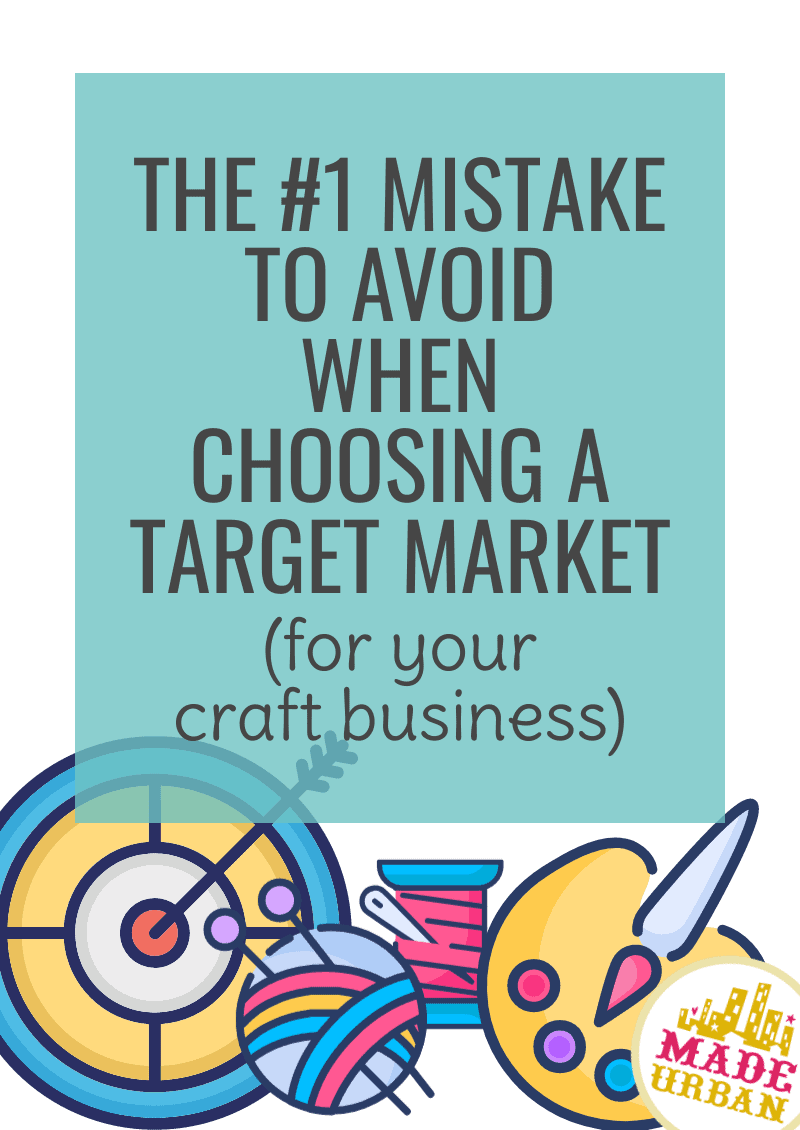The #1 Mistake to Avoid when Choosing a Target Market (for your craft business)
Aside from getting set up legally, choosing your target market is the first step every business should take…even before deciding on a product to sell.
However, that’s not how most handmade businesses start. Most owners start with a product they’ve made (and friends and family have told them they should sell), then they go looking for customers to buy it.
This is a tough approach and typically leads to low sales.
A good target market is the foundation of your business. Every other aspect should follow, and be based on your chosen target market.
If you’re in business to sell to people, shouldn’t their interests and needs be the most important?
The biggest target market mistake (what not to do)
Most of the advice out there tells you to define your target market’s demographics, such as:
- age
- gender
- education
- occupancy
- income level
- location
- etc.
Demographics don’t help you find a good target market.
They’re important for other business details such as:
- Pricing
- Branding
- Marketing messages & language
- Etc.
But demographics should not be what defines your target market.
Here’s why:
1) Demographics don’t help you FIND your target market
Where do you find people to market and sell to if you only have a set of demographics?
How do you find the right marketing platform that reaches your exact target market based on income level?
Sure, you can run a Facebook ad and select who it reaches based on specific demographics; ones that match your criteria exactly.
But who’s to say those people are looking for your product or will be interested in it?
You’ll end up spending money on ads that don’t convert.
The best places to market and sell your products are where your target market is already thinking about your product and in a shopping mindset.
It’s the difference between:
Scrolling Facebook to catch up on your friends’ lives and being asked to buy a piece of art for your living room.
VS.
Reading a blog post about the coastal living room trend and seeing a set of coastal-style prints available to buy.
Which scenario is more likely to lead to a sale for the coastal-style artist selling prints?
>> The one where an ad is targeting people on Facebook based on their age, gender, income, etc. and not knowing if they’re interested in coastal decor style?
>> Or the one that targets people who are definitely interested in coastal decor style at a time that they’re thinking about decorating in a coastal style and open to buying coastal style pieces?
Demographics don’t help you find your perfect customers at the right time and in the right place.
2) Demographics don’t help you create a connection with your customers
As consumers, we need to feel some sort of a connection to a business, brand, or product to buy non-essential products (which is what most craft businesses sell).
Just as we don’t automatically connect with others because they’re the same age or gender as us, consumers don’t feel a connection to businesses just because they’ve made a product for women, or men, or women in their 30’s, etc.
Imagine someone saying to you:
You should meet my friend Jane. She’s the same age as you so I know you guys will hit it off.
How excited would you be to go into that meeting?
Now imagine someone saying to you:
You’ll love my artwork. I create it for people your age.
Do you buy artwork based on your age? Are art stores categorized by age or gender? Or based on the level of education someone has completed?
As consumers, we don’t connect with a product and feel as though we have to have it simply because it was made with a specific set of demographics in mind.
Defining your target market based on demographics doesn’t help you truly understand your potential customers and what makes them tick.
3) Demographics don’t help you create the perfect product for your target market
What if I told you I was going to make a bag that’s perfect for you, and all I need to know is your gender, age, income level, and whether or not you attended post secondary school.
Do you think I could make a bag you love based on that information?
Again, some of those details will help me with certain aspects of the bag. I need to consider income level to determine price range, gender and age would help me when deciding on style, materials, etc.
But they don’t help me choose the details that will make you fall in love with a bag.
There are dozens of details you should know about your ideal customer. But there’s one detail about a target market that will influence all aspects of your business.
This article explained what NOT to base you target market on.
The next article explains what TO base your target market on.
Please read: How To Find the Correct Target Market for your Craft Business
Please let me know in the comments if you have any questions!


Hey, I’m Erin 🙂 I write about small business and craft show techniques I’ve learned from being a small business owner for almost 2 decades, selling at dozens of craft shows, and earning a diploma in Visual Communication Design. I hope you find my advice helpful!
